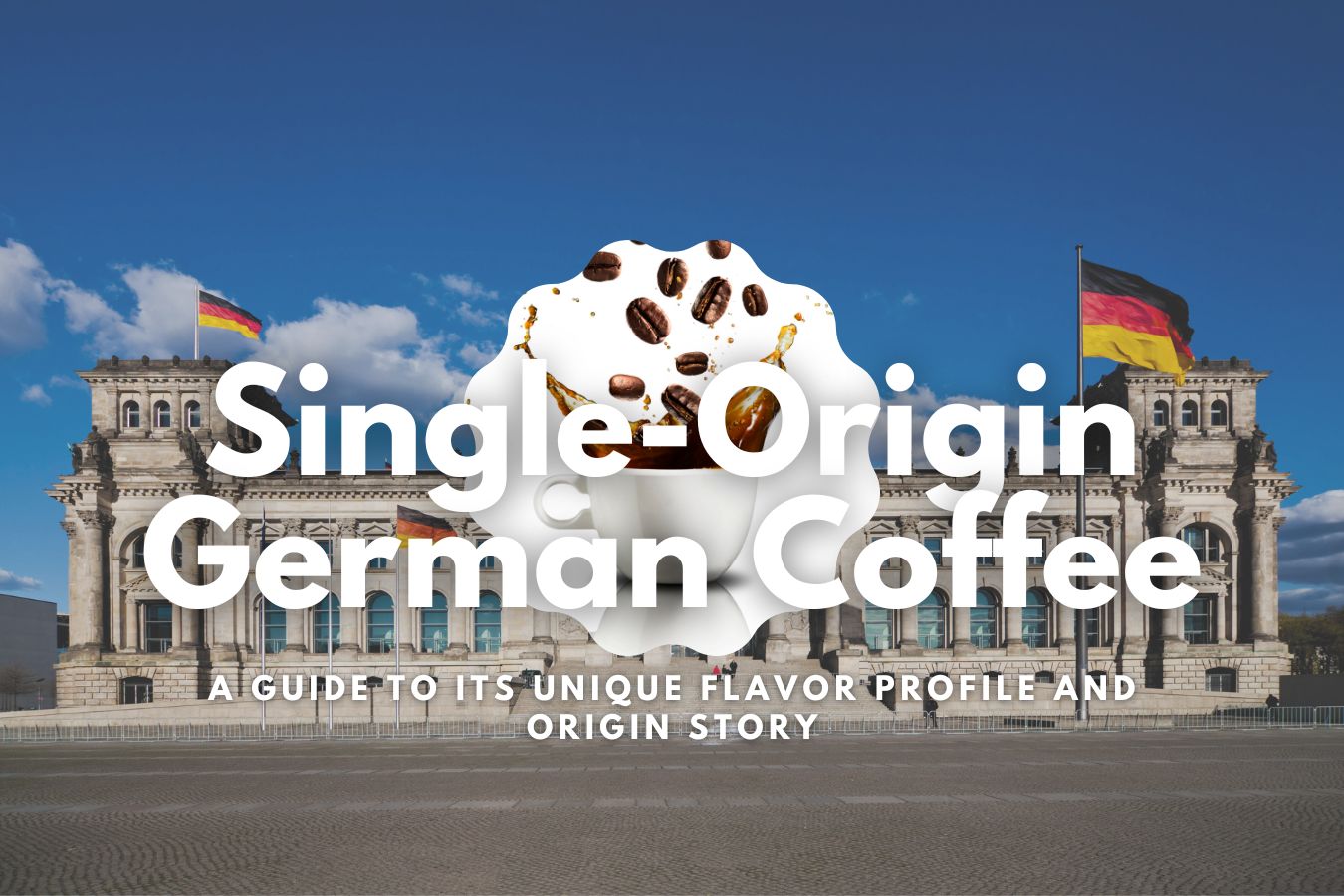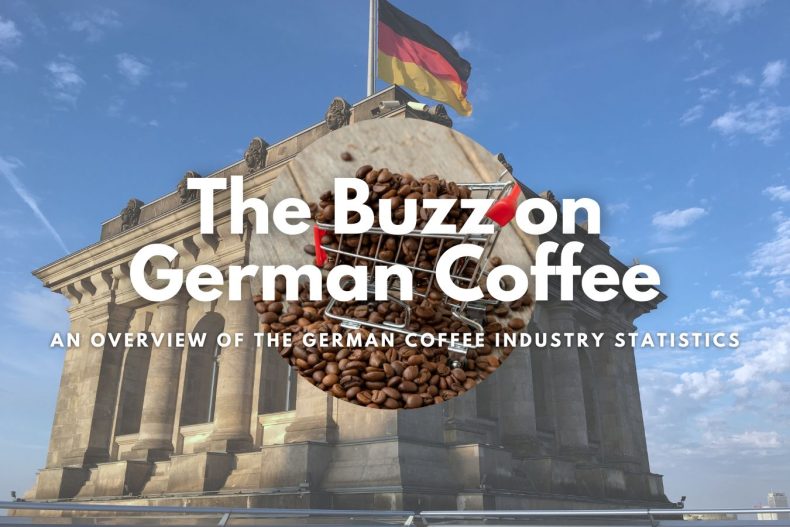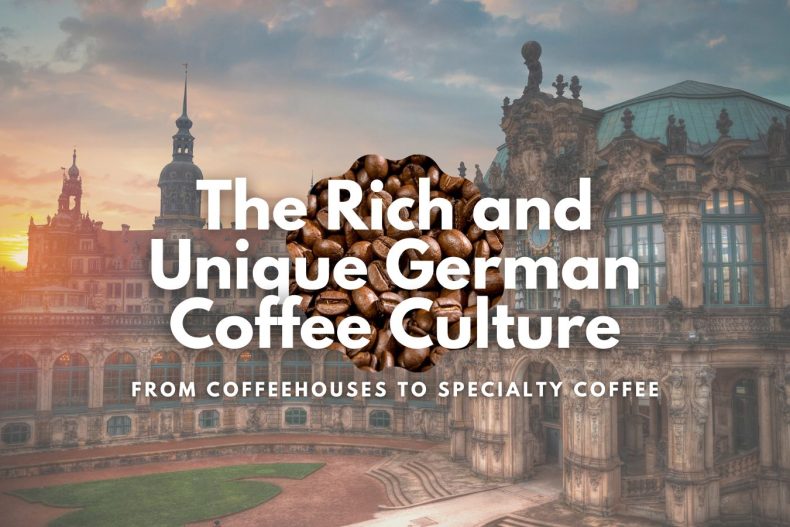
If you’re a coffee enthusiast, you know that not all coffee is created equal. One factor that can significantly impact the taste and quality of coffee is its origin. Single-origin coffee, which comes from a single geographic location, is prized by coffee connoisseurs for its unique flavor profile.
German coffee, in particular, is a lesser-known variety gaining recognition for its distinct taste and origin story. This article will explore the history and flavor profile of single-origin German coffee and why it’s worth trying.
Introduction to Germany Coffee
Coffee has been enjoyed in Germany for centuries, with the first coffeehouses appearing in the late 17th century. Today, Germany is the second-largest coffee consumer in Europe, after Italy.
However, regarding coffee production, Germany is not typically a country that comes to mind. That’s because most of the coffee consumed in Germany is imported from other countries. However, in recent years, German coffee roasters have been producing single-origin coffee that showcases the unique flavors of their country.
What is Single-Origin German Coffee?
Single-origin German coffee is made from coffee beans grown in a specific region of Germany without blending or mixing with beans from other areas. This means that the flavor and aroma of the coffee are unique to that particular region, and the coffee is often considered to be of higher quality than blended varieties.
German coffee is typically grown in the country’s southern region, where the climate and soil conditions are ideal for producing high-quality beans. The most common varieties of German coffee are Arabica and Robusta, although many other types are grown in the country.
The Origins of Single-Origin German Coffee
Coffee has a long and fascinating history in Germany. The first coffee house in Germany opened in Hamburg in 1677, and by the 18th century, coffee had become a popular beverage across the country. However, it wasn’t until the 19th century that coffee began to be grown commercially in Germany.
Today, Germany is one of the leading coffee producers in Europe, with many small-scale farmers producing high-quality beans for both the domestic and international markets. The most famous region for German coffee production is the Black Forest, where the coffee is grown at high altitudes in rich volcanic soil.
German Coffee History
Coffee was first introduced to Germany in the late 17th century, and by the 18th century, coffeehouses had become a popular gathering place for intellectuals, artists, and politicians.
However, it wasn’t until the 20th century that Germany began to produce coffee. During World War II, the country’s coffee supply was cut off, creating a domestic coffee industry. Germany is a minor coffee producer, with most of its coffee coming from Brazil, Vietnam, and Colombia.
German Coffee Regions
German coffee is grown in several country regions, including the Black Forest, the Harz Mountains, and the Bavarian Alps. Each region produces coffee with its unique flavor profile, influenced by soil, altitude, and climate. For example, coffee from the Black Forest region is known for its nutty flavor profile, while coffee from the Bavarian Alps has a fruity and floral taste.
Flavor Profile of German Coffee
Single-origin German coffee is known for its mild acidity and low bitterness. It has a smooth, clean taste with notes of chocolate and nutty flavors. Due to its flavor profile, German coffee is often used for espresso blends. The unique flavor profile of German coffee is influenced by the country’s climate and soil, as well as the roasting techniques used by German coffee roasters.
Sustainable German Coffee
Sustainable coffee practices are becoming increasingly important in the coffee industry, and Germany is no exception. Many German coffee roasters are committed to using sustainable and ethical coffee practices, such as Fairtrade certification and direct trade relationships with coffee farmers. By supporting sustainable German coffee, you can help ensure that coffee production is environmentally and socially responsible.
German Coffee Culture
Coffee plays a vital role in German culture, with coffeehouses and cafes serving as gathering places for socializing and relaxation. German coffee culture is known for its emphasis on quality and tradition. When drinking coffee in Germany, it’s common to enjoy a pastry or cake alongside it, such as a slice of Black Forest cake or a pretzel.
How is Single-Origin German Coffee Made?
The process of making single-origin German coffee begins with the growing and harvesting of coffee beans. The beans are then carefully roasted to bring out their unique flavor profile. German coffee is typically roasted to a medium to dark roast, which gives it a rich and bold flavor.
Once the coffee is roasted, it’s ground and brewed using various methods, including drip, pour-over, and French press. Each brewing method brings out different nuances in the flavor and aroma of the coffee, so it’s worth experimenting to find the one that suits your taste.
Why is Single-Origin German Coffee Worth Trying?
If you’re a coffee lover, there are many reasons why you should try single-origin German coffee. Here are just a few:
- Unique Flavor: Single-origin German coffee has a bold and complex flavor, unlike any other coffee you’ve tasted. The special growing conditions in Germany give the coffee a distinct flavor profile worth exploring.
- High Quality: Single-origin German coffee is often considered higher quality than blended varieties because of the attention to detail that goes into its production. Every step, from carefully selected beans to the precise roasting process, is designed to produce the best possible coffee.
- Sustainability: Many small-scale farmers in Germany practice sustainable agriculture, meaning their coffee is grown using environmentally-friendly methods. By choosing single-origin German coffee, you’re supporting these farmers and helping to promote sustainable farming practices.
- Cultural Experience: Coffee is an integral part of German culture, and trying single-origin German coffee is a great way to experience this culture firsthand. Whether you’re enjoying a cup at a local
Buying Single-Origin German Coffee
If you’re interested in trying single-origin German coffee, there are several reputable sources where you can purchase it. Look for coffee roasters specializing in German coffee, and select single-origin beans from a specific region for the best flavor experience. You can also look for Fairtrade and sustainable certifications to support ethical coffee production.
Brewing Tips for Single-Origin German Coffee
To fully appreciate the unique flavor of single-origin German coffee, it’s important to brew it properly. Here are a few tips to help you get the most out of your coffee:
- Use Fresh Beans: Single-origin German coffee is best enjoyed when the beans are fresh. Look for beans that have been roasted within the last two weeks, and store them in an airtight container to preserve their freshness.
- Grind to Order: To get the best flavor from your coffee, it’s essential to grind the beans just before brewing. This helps preserve the coffee’s flavor and aroma and ensures a more consistent brew.
- Experiment with Brewing Methods: There are many different ways to brew coffee, and each method can bring out different nuances in the flavor and aroma of the coffee. Try experimenting with other brewing methods to find the one that suits your taste.
- Use the Right Water Temperature: The ideal water temperature for brewing coffee is 205 degrees Fahrenheit. If the water is too hot or cold, it can affect the flavor of the coffee.
- Don’t Over-Brew: Overbrewing coffee can result in a bitter taste. Be sure to follow the recommended brewing times for your particular method to get the best flavor from your coffee.
Conclusion
Single-origin German coffee is a unique and flavorful variety of coffee that is worth trying. Its distinct taste profile, influenced by Germany’s climate and soil, sets it apart from other coffee varieties.
By learning about the history and culture of German coffee and its sustainable production practices, you can gain a deeper appreciation for this specialty coffee. Next time you’re in the market for a new coffee experience, consider trying single-origin German coffee.
FAQs
Q: Is single-origin German coffee expensive? A: Single-origin German coffee can be more expensive than blended varieties because of the attention to detail that goes into its production. However, the higher cost is often justified by the coffee’s unique flavor and high quality.
Q: Can I buy single-origin German coffee online? A: Yes, many online retailers sell single-origin German coffee. Be sure to look for a reputable retailer that offers fresh, high-quality coffee.
Q: What is the best way to store single-origin German coffee? A: Single-origin German coffee should be stored in an airtight container at room temperature. Avoid storing it in the refrigerator or freezer, as this can affect the flavor of the coffee.
Q: Is single-origin German coffee stronger than other types of coffee? A: Single-origin German coffee is typically roasted to a medium to dark roast, which can give it a bold and intense flavor. However, the strength of the coffee can vary depending on the brewing method and the individual bean variety.


